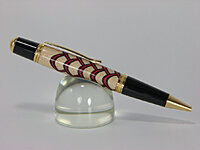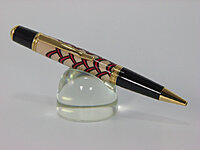There is a "tutorial" in the Resources section on how to do this. Here is the title :
Scalloped Segmented Pen Blank (Looks like Fish Scales.)
Has anyone made a blank using this as a guide? . How did it turn out ? . Do you have any comments about following this method ?
My comment is: there is lots of waste because for every scallop (or fish scale) that you make you throw away an equal length of wood.
Would appreciate any response you might have.
Thanks
Scalloped Segmented Pen Blank (Looks like Fish Scales.)
Has anyone made a blank using this as a guide? . How did it turn out ? . Do you have any comments about following this method ?
My comment is: there is lots of waste because for every scallop (or fish scale) that you make you throw away an equal length of wood.
Would appreciate any response you might have.
Thanks


